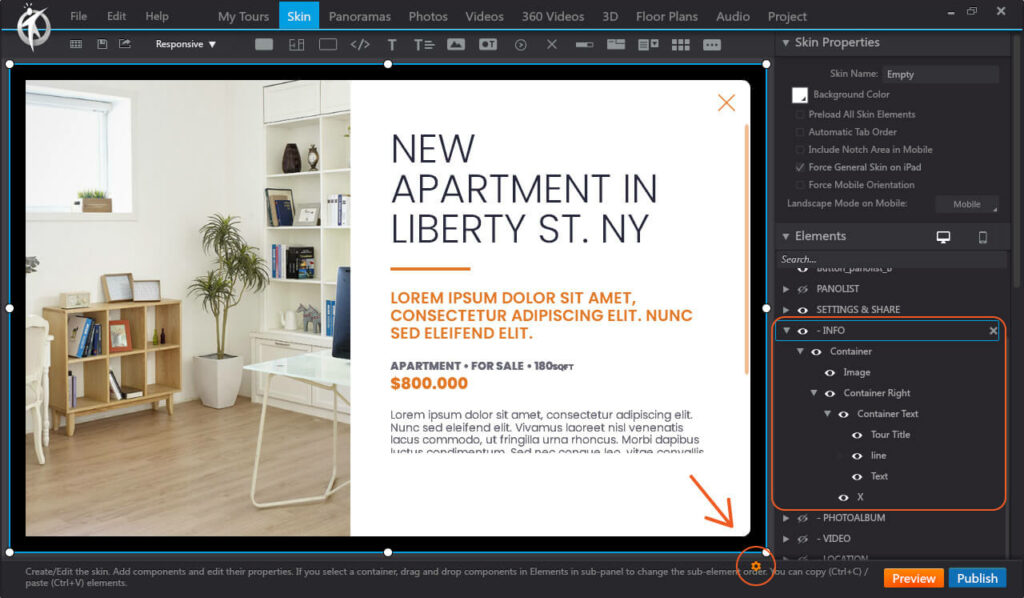¿Cómo podemos ayudar?
Ho due tour diversi. Possono essere uniti in uno solo? O almeno posso combinare due skin diverse?
Per quanto riguarda i tour no, non è possibile combinare due progetti diversi. I contenuti multimediali contenuti in un tour non possono essere importati globalmente in un altro tour. Dovresti reimportare i file multimediali e assegnare impostazioni o proprietà specifiche a ciascuno di essi.
Per quanto riguarda le skin, non è possibile combinare automaticamente due skin diverse. Se hai una skin e ne importi un'altra, le informazioni della prima andranno perse. Tuttavia, puoi aggiungere nuovi elementi, schermate o impostazioni da una skin all'altra, combinando efficacemente entrambe le skin.
Questo deve essere fatto utilizzando la libreria VTPro, che ci consente di esportare e importare sia elementi skin che hotspot. Per esportare un elemento (o un contenitore con più elementi interni), è sufficiente fare clic sulla rotella arancione e quindi selezionare "esporta questo elemento per condividerlo con altri PC" per salvare quel componente come file VTPro esterno:

Puoi quindi andare all'altra skin e importare il componente. Questo viene fatto all'interno della scheda skin facendo clic sul pulsante "Varie", l'ultimo elemento nell'elenco degli elementi da aggiungere:

Importa l'elemento se lo hai già nella libreria sullo stesso computer, oppure utilizza l'opzione "Importa un file di libreria VTL" (questo lo aggiungerà all'elenco delle tue librerie).

In questo modo potrai aggiungerlo allo schermo come un altro componente della skin iniziale che hai aperto.
Come suggerimento, se devi esportare molti schermi o componenti diversi, non è necessario farlo uno per uno. Puoi creare un nuovo contenitore principale e trascinare tutti i componenti che desideri al suo interno. Successivamente, dovrai solo esportare il contenitore principale, poiché verranno inclusi anche tutti i componenti secondari.